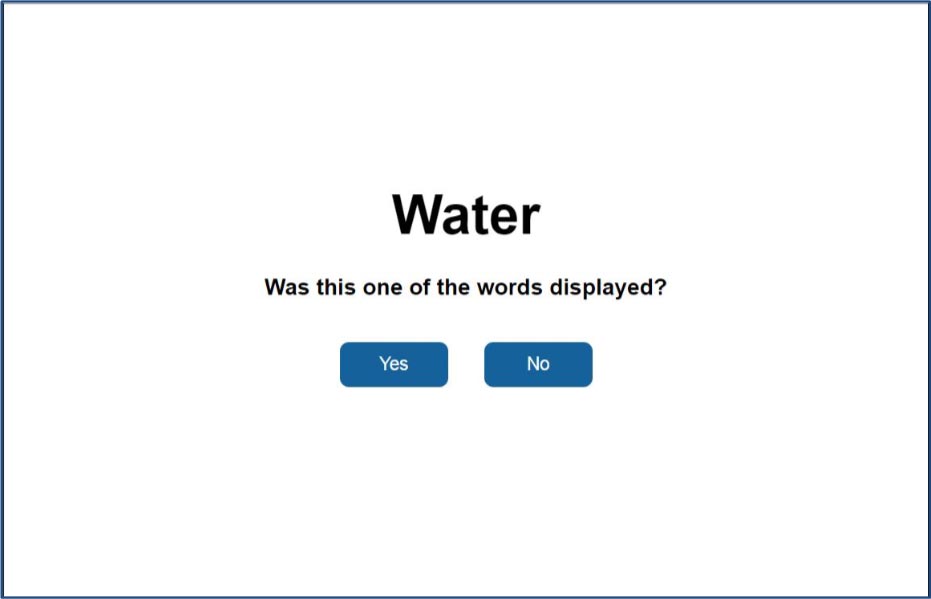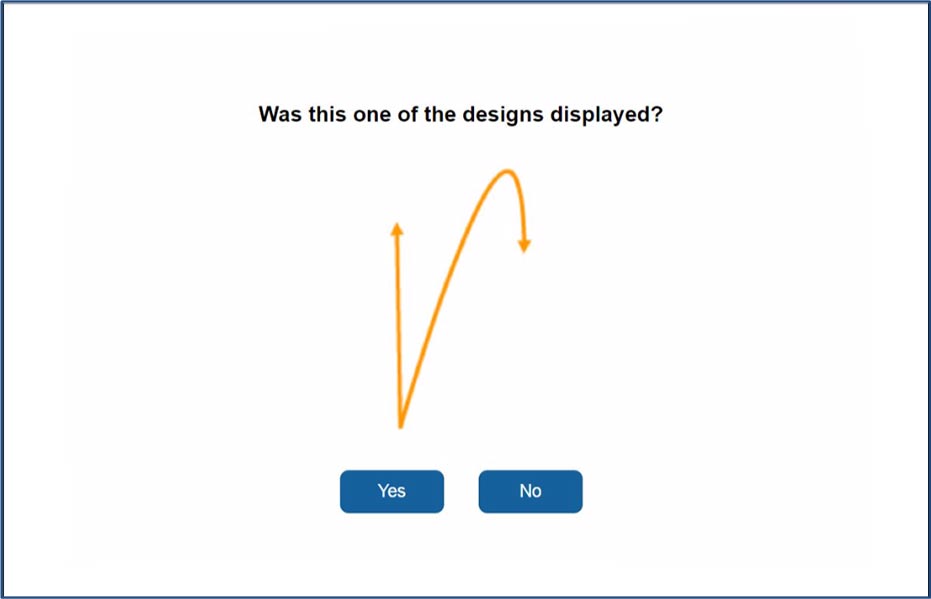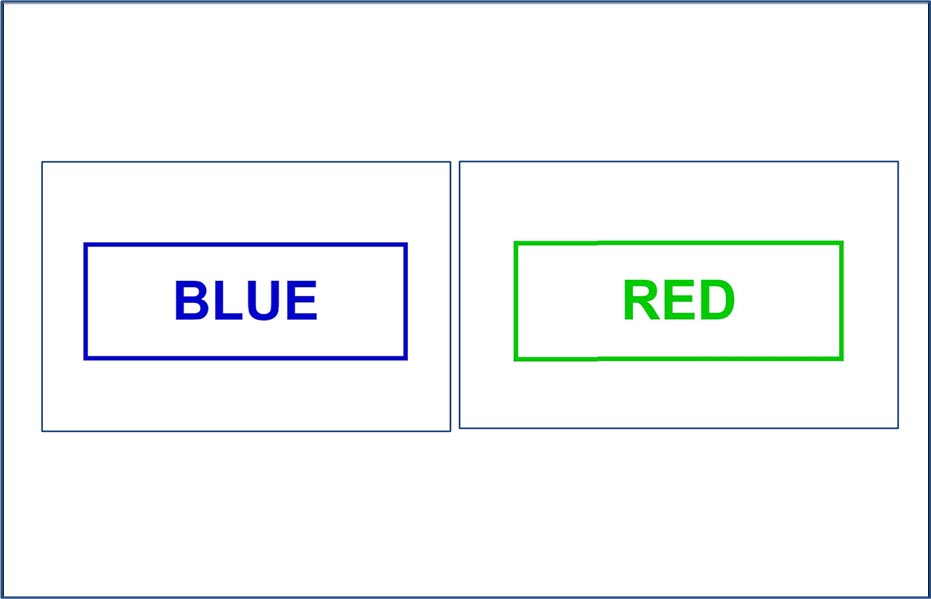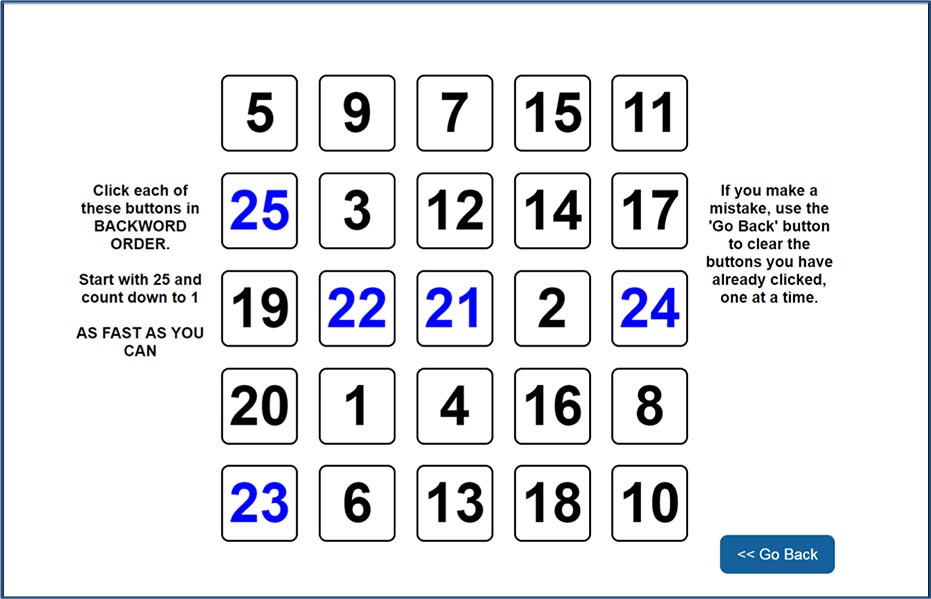Neurocognitive Test Modules Descriptions, Administration Instructions, and Scoring
Table of Contents
Word Memory – Module 1#

- Evaluates attentional processes and verbal recognition memory
- Utilizes a word discrimination paradigm:
- Presents 12 target words twice for 750 milliseconds to facilitate learning the list.
- Tests recall via the presentation of the 24-word list.
- The words are chosen from the same semantic category as the target word.
- There are five different forms of the word list to minimize practice effects from one administration to the next.
- Twelve target words were selected for inclusion in each of the five word lists.
- Twelve related but not identical words make up each of the administrations. Non-target words are included to create a challenge situation.
- For example, if the target word is SMALL, the non-target word might be BIG.
- To respond to each question, the test taker clicks the “yes” or “no” buttons.
- Individual scores are provided for both correct “yes” and “no” responses. In addition, a total percent correct score is provided.
Delay Condition: Following the administration of all other test modules (approximately 20 minutes), the test taker is again tested for recall via the same method described above. The same scores that are described above are provided for the delay condition.
Design Memory – Module 2#

- Evaluates attentional processes and visual recognition memory
- Utilizes a design discrimination paradigm
- Tests recall of 24-designs.
- Comprised of 12 target designs and 12 non-target designs (target designs rotated in space).
- Presents 12 target designs twice for 750 milliseconds to facilitate learning the list.
- The test taker responds by mouse-clicking the “yes” or “no” buttons.
- Individual scores are provided for both correct “yes” and “no” responses.
- In addition, a total percent correct score is provided.
- Test stimuli were selected to be relatively difficult to encode verbally
- Designs were “assigned” to one of the five administrations randomly
Delay Condition: Following the administration of all other test modules (approximately 20 minutes), the test taker is again tested for recall via the same method described above. The same scores that are described above are provided for the delay condition.
X’s and O’s – Module 3#

- Measures visual working memory and visual processing/visual motor speed
- Includes a distracter task to interfere with memory rehearsal
- The distracter is a choice reaction time test and performance on this measure is incorporated into other aspects of ImPACT (e.g., visual motor processing speed and reaction time).
- The test taker practices the distracter task prior to presentation of the
memory task. - During this task, the test taker is asked to perform a specific action if a blue square is presented or if a red circle is presented.
- Once the test taker has completed this task, the memory task is presented.
- Memory task: a random assortment of X’s and O’s is displayed for 1.5
seconds - For each trial: three of the X’s or O’s are illuminated in YELLOW (the test
taker has to remember the location of the illuminated objects). - Immediately after the presentation of the 3 X’s or O’s, the distracter task
re-appears on the screen. - Following the distracter task, the memory screen (X’s and O’s) re-appears
and the test taker is asked to click on the previously illuminated X’s and
O’s. - Scores are provided for correct identification of the X’s and O’s
(memory), reaction time for the distracter task, and the number of
errors on the distracter task.
- Memory task: a random assortment of X’s and O’s is displayed for 1.5
- For each administration of ImPACT, the test taker completes 4 trials.
Symbol Match–Module 4#

- Evaluates visual processing speed, learning, and memory
- Presents a screen that displays common symbols (triangle, square, arrow, etc.).
- Directly under each symbol is a number button from 1 to 9
- Below this grid, a symbol is presented.
- The test taker is required to click the matching number as quickly as possible and to remember the symbol/number of pairings.
- Correct performance is reinforced through the illumination of a correctly clicked number in GREEN. Incorrect performance illuminates the number button in RED.
- Following the completion of 27 trials, the symbols disappear from the top grid.
- The symbols reappear below the grid and the test taker is asked to recall the correct symbol/number pairing by clicking the appropriate number button.
- This module provides an average reaction time score and a score for the memory condition.
Color Match–Module 5#

- Represents a choice reaction time task and measures impulse control/response inhibition
- First, the test taker is required to respond by clicking a red, blue or green button as they are presented on the screen. This procedure is completed to assure that subsequent trials would not be affected by color blindness.
- Next, word names are displayed on the screen in the same color as the word (e.g. RED), or in a different color (GREEN or BLUE)
- The test taker is instructed to click in the box as quickly as possible only if the word name is presented in the matching color.
- In addition to providing a reaction time score, this task also provides an error score.
Three Letters – Module 6#

- Measures working memory and visual-motor response speed
- First, the test taker is allowed to practice a distracter task that consists of 25 numbered buttons on a 5x5 grid.
- The test taker is instructed to click as quickly as possible on the numbered buttons in backward order starting with 25.
- The position of the numbers on the grid are randomized after each trial to minimize practice effects.
- The test taker is then presented with three consonants displayed on the screen.
- Immediately following display of the three letters, the numbered grid re-appears, and the test taker is again instructed to click the numbered buttons in backward order.
- After 18 seconds, the numbered grid disappears, and the test taker is asked to recall the three letters by typing them on the keyboard.
- This task yields a memory score (total number of correctly identified letters), and a score for the average number of correctly clicked numbers per trial from the distracter test.
- Five trials of this task are presented for each administration of the test.
Not the solution you are looking for?
Please check other articles or open a support ticket.